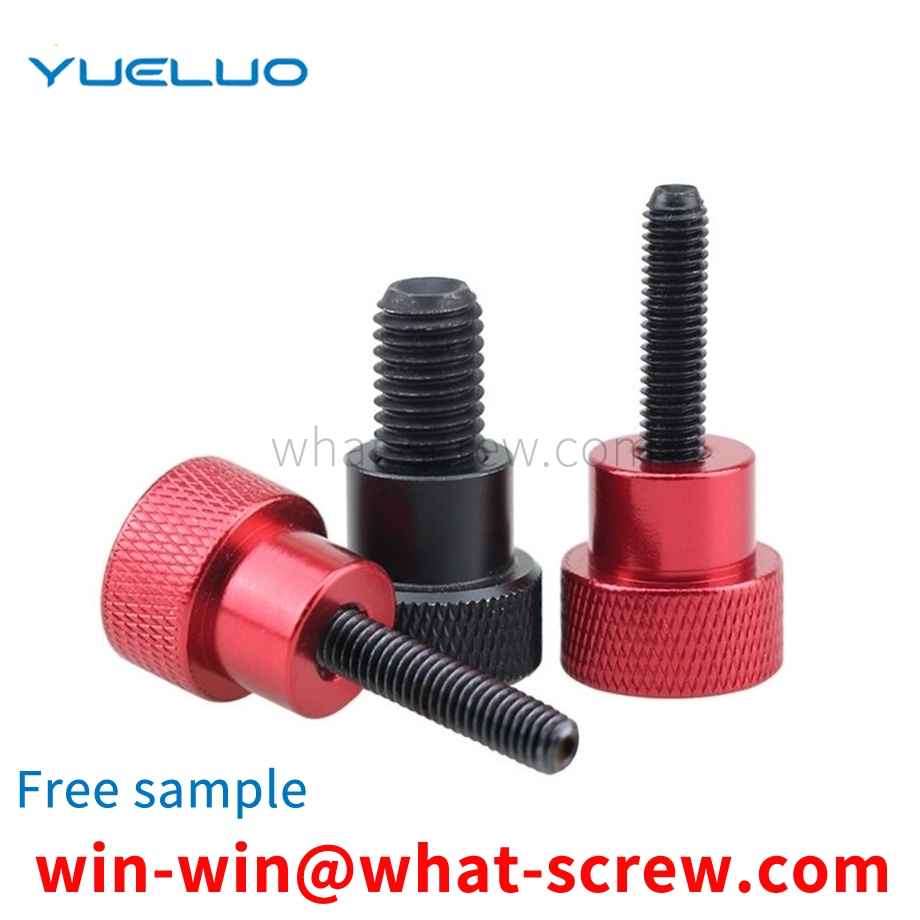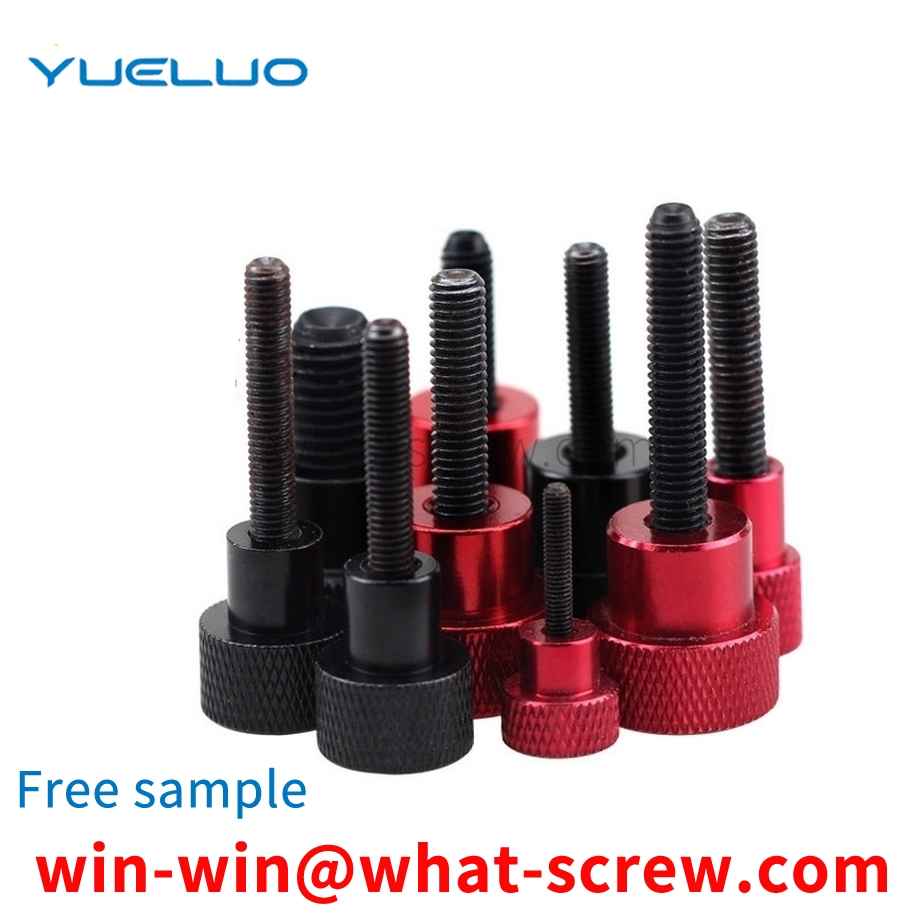Hex Portlandcap screw and Hex bolt Hex bolt As the name suggests, it is a male threaded fastener with a hexagonal head, designed to be turned with a wrench. According to the ASME B18.2.1 standard, the head height and shank length tolerance of the hexagon head screw (Hex Portlandcap screw) is smaller than that of the general large hexagon bolt (Hex bolt), so ASME B18.2.1 hexagon screw is suitable for installation in all hexagon bolts that can be used. places, also including places where the large hex bolts are too large to be used. The screw head of the hexagon socket screw is round on the outside, and the middle is a concave hexagon, and the hexagon screw is the kind of common hexagonal screw head. The hexagon socket head screwdriver looks like a '7'. Cut two sections of a hexagonal steel bar and bend it at 90 degrees to form a hexagon socket head screw wrench, which is sold in hardware tool stores. PortlandPortlandHexagon socket screwdrivers are not so-called mobile phone Portlandspecial screwdrivers. Mobile phone Portlandspecial screwdrivers can be bought at the booths that sell repair tools in the electronics market. PortlandPortlandHexagon socket head Portlandcap screws are often used in machinery, mainly because they are easy to fasten, disassemble, and not easy to slip. The Allen wrench is generally a 90° bend. One end of the bend is long and one side is short. When using the short side to drive screws, holding the long side can save a lot of force and tighten the screws better. The long end has a round head (a hexagonal cylinder is similar to a sphere) and a flat head. The round head can be easily slanted and disassembled, and some parts that are inconvenient to lower the wrench can be installed. The manufacturing cost of the outer hexagon is much lower than that of the inner hexagon. Its advantages are that the screw head (the force position of the wrench) is thinner than the inner hexagon, and some places cannot be replaced by the inner hexagon. In addition, machines with low cost, low power strength and low precision requirements use much less hexagon socket screws than external hexagon screws. [1] Socket Portlandcap screw, also known as socket head screw or Allen bolt, is a screw with a hexagonal inner hole on the head, with a hexagonal ruler (hex key, Allen wrench or Allen key) Tighten or loosen only after inserting into the inner hole. The most commonly used hexagon socket head screws are cylindrical head screws with a head diameter of about 1.5 times the main diameter of the thread (1960 series). Countersunk head Portlandcap screw. The countersunk hole design allows the screw head to be rotated without being exposed on the surface of the fixed object, so it is mostly used in places where the surface is small and it is inconvenient for traditional wrenches to use.
The conventional auger bit structure 1 includes a rod body 11, a screw head 12 provided on one end of the rod body 11, a drill tail 13 provided on the other end of the rod body 11, and a plurality of threads 14 arranged around the rod body 11; Wherein, the periphery of the drill tail 13 defines a parting line 15, and the parting line 15 makes the drill tail 13 symmetrically divided into a side 131 and a side 132, and a cutting end 133 is formed at the junction of the end of the side 131 and the end of the side 132, respectively. The cutting end 133 is concavely provided with a quarter-turn chip flute 134 in the same direction of the helix, and the edge 132 continues the chip flute 134 and has a quarter-turn chip flute 135 with different helical curvatures. , by connecting the chip groove 134 and the chip groove 135 through different helical curvatures, the drill tail 13 can form a symmetrical and complete chip groove of 188 degrees.
Shaft retaining ring (hereinafter referred to as retaining ring) is a very common part and is widely used in shaft parts. The existing solution for pressing the retaining ring is: place the retaining ring sleeve in the chamfering section or the guiding section of the shaft head, and then use an indenter whose inner hole diameter is larger than the diameter of the shaft head to press the retaining ring into the groove, and then press the retaining ring into the groove through the shaft head. The retaining ring is combined with the slot to prevent the indenter from continuing to move downward.
Ordinary snap-type retaining rings have ears on their structure, which cause interference with the inner parts. If the ears are not provided, it is very troublesome to disassemble. For the very demanding aerospace field, ordinary snap rings cannot meet their requirements.
When the countersunk head screws and hexagon socket head bolts are produced by the cold heading process, the original structure of the steel will directly affect the forming ability of the cold heading process. In the process of cold heading, the plastic deformation of the local area can reach 60%-80%, so the steel must have good plasticity. When the chemical composition of the steel is constant, the metallographic structure is the key factor to determine the plasticity. It is generally believed that the coarse flaky pearlite is not conducive to cold heading forming, while the fine spherical pearlite can significantly improve the plastic deformation ability of the steel. For medium carbon steel and medium carbon alloy steel with a large amount of high-strength bolts, spheroidizing (softening) annealing is performed before cold heading, so as to obtain uniform and fine spheroidized pearlite to better meet the actual production needs. For the softening annealing of medium carbon steel wire rods, the heating temperature should be kept above and below the critical point of the steel, and the heating temperature should not be too high, otherwise tertiary cementite will precipitate along the grain boundary, resulting in cold heading cracking. The wire rod of medium carbon alloy steel is annealed by isothermal spheroidization. After heating at AC1+ (20-30%), the furnace is cooled to slightly lower than Ar1, the temperature is about 700 degrees Celsius for an isothermal period, and then the furnace is cooled to about 500 degrees Celsius and air-cooled. The metallographic structure of the steel changes from coarse to fine, from flake to spherical, and the cracking rate of cold heading will be greatly reduced. The general area of softening annealing temperature for 35\45\ML35\SWRCH35K steel is 715-735 degrees Celsius; while the general heating temperature for spheroidizing annealing of SCM435\40Cr\SCR435 steel is 740-770 degrees Celsius, and the isothermal temperature is 680-700 degrees Celsius.
We have many years of experience in the production and sales of screws, nuts, flat washers, etc. The main products are: A483 hexagon nuts, white and black PC Portlandtransparent screw caps, pure titanium pan head screws, hexagon socket shoulder screws and other products, we can provide you with suitable products Your fastener solution.



















 Service Hotline
Service Hotline




